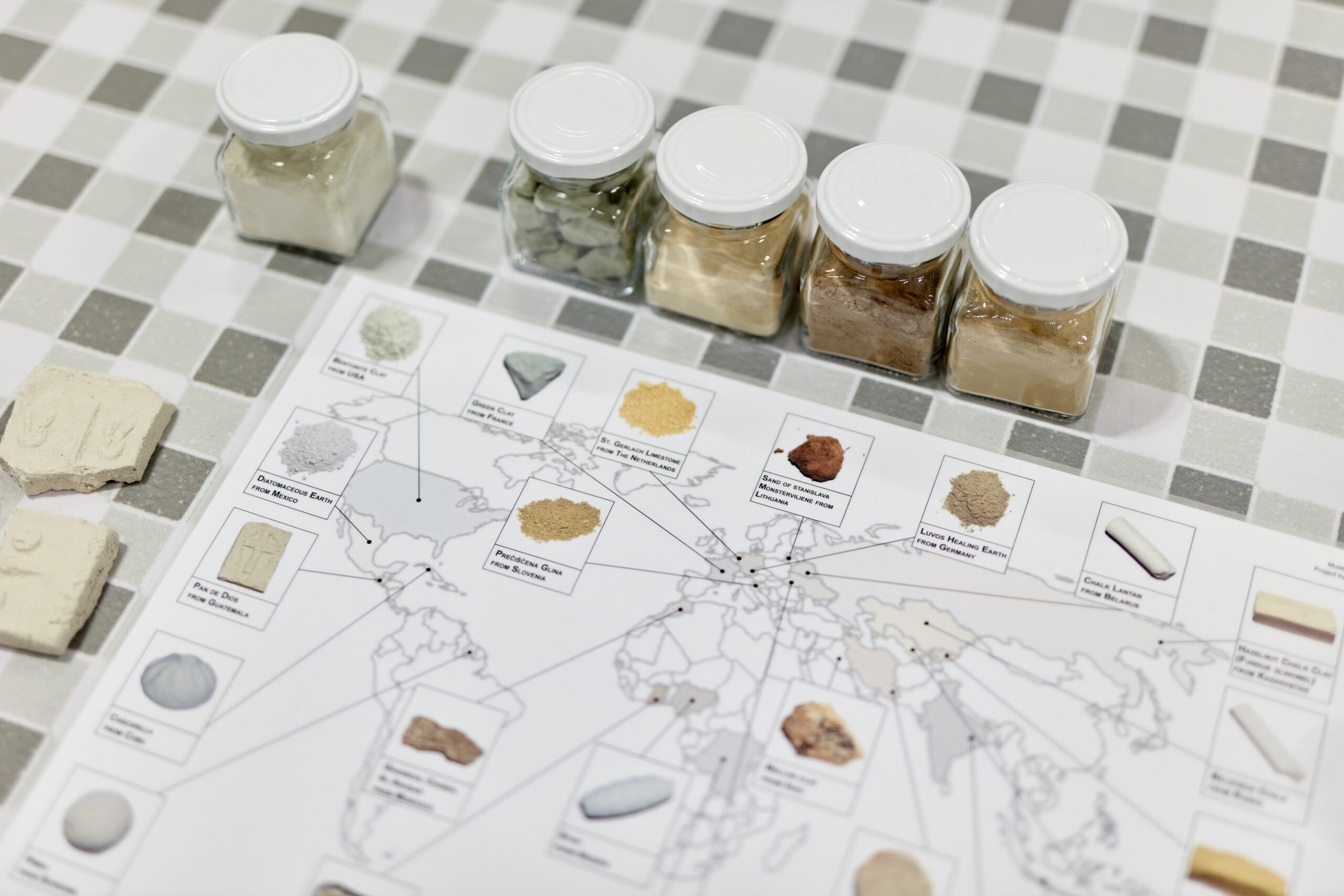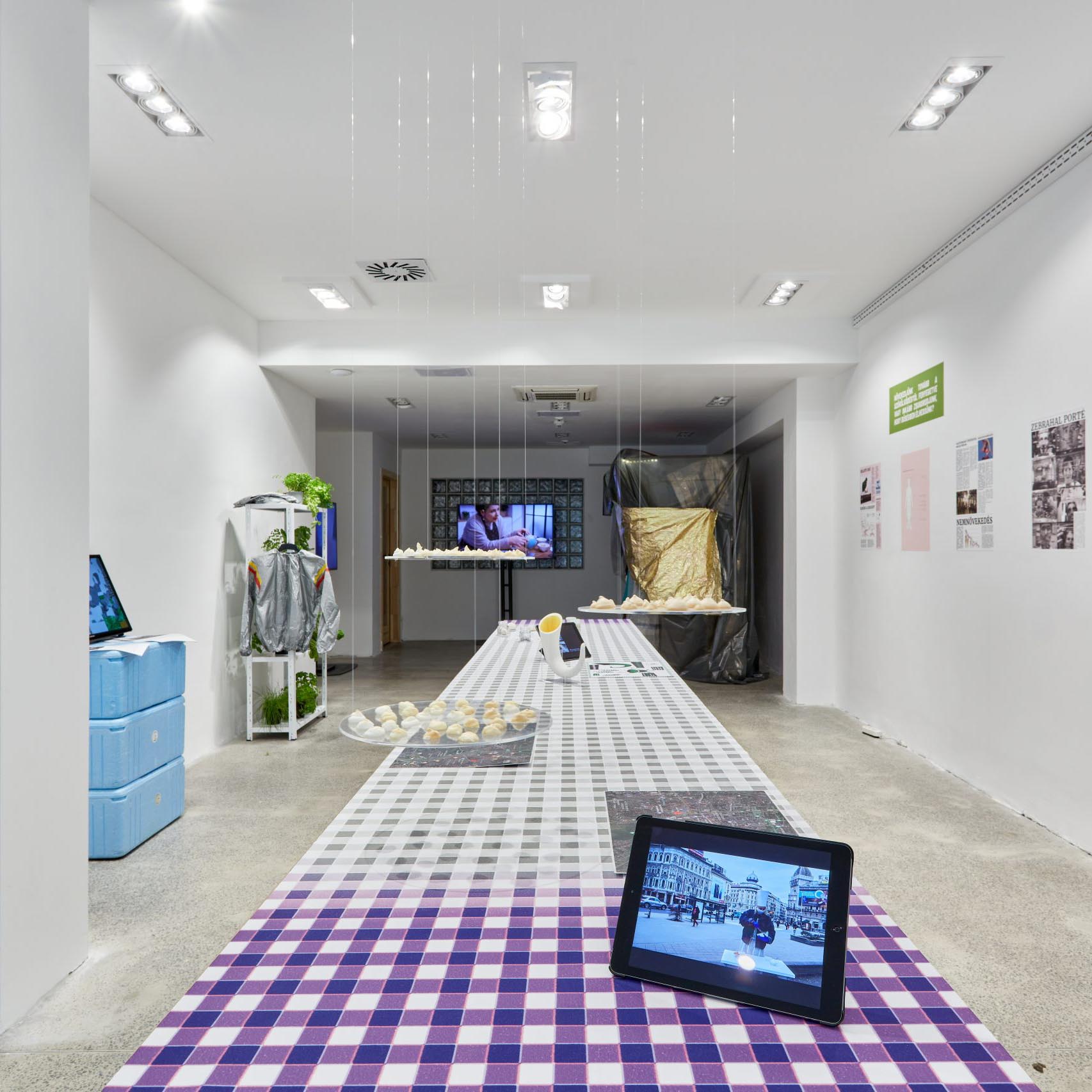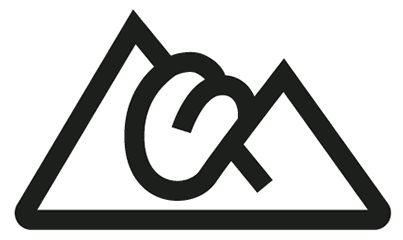MENÜ imaginaire
What do you eat when resources are limited?
MENÜ imaginaire focuses on the future of eating: artists, designers, and philosophers raise questions regarding the most pressing problems of food systems. Our lifestyle and consumption habits have a significant impact on the natural environment — the presented works and the speculative hypotheses set forth by them examine the impact of human activity on the environment through the topic of eating.

Most of us develop the most intimate bond with nature while eating: after all, eating is internalizing nature. The speculative futurology projects presented in the scope of MENÜ imaginaire query the idea that humans can be dissociated from the environment or “nature,” regardless of their place of residence or lifestyle. The works at the exhibition render global processes which are difficult to fathom on account of their scale, eg. air pollution (Center for Genomic Gastronomy: Smog Tasting) imaginable through the visceral, quotidian experience of eating.
The body plays a special role in this thought experiment: not only as a terrain of reception but—even reducing itself and its consumption (Arne Hendriks: The Incredible Shrinking Man), utilizing its own excrement as a resource (Thieu Custers: Bodyponics)—as an indicator organism that adapts to environmental changes. The ideas of the participating artists are diverse: some positions are optimistic, some are pessimistic (Absentology: The futurology of consumption), some reinterpret traditions, some build on the potentials of new technologies or question their efficiency. How do we interact with these technologies, what are the possibilities of collaboration with them, and where is the middle ground, in which technology serves the planet’s needs but doesn’t claim to solve all environmental issues through development and growth?

Agriculture, or the cultivation of soil to make food began as people realised that instead of adjusting their habits to nature, they can make nature adjust to their own needs by separating, detaching it from themselves. Referring to the ‘people’ as an umbrella term is not exactly accurate, as similarly to the term describing the current historical epoch ‘Anthropocene’, it neglects economical-political dominances. Exploiting the environment has always been the privilege of a small group of people. At issue is whether in the current economical system it is possible to return to more gentle, caring, and ecologically conscious modes of production, consumption, and decision-making, or whether we will aim to develop more and more innovative technological solutions to overcome the erosion of nature that we are responsible for. What do we even understand as ‘nature’, is the opposition of ‘natural’ and ‘artificial’ still valid? While previously, designers strove for making food contained, shippable and sellable in their design processes, nowadays they look at the world from a more critical point of view. The aim of their work is more to do with making the infrastructures and relationships that surround crop growth, food produce, and consumption visible as well as fabricating new, often radical prognoses for the future.
Eating soil is a special way of connecting with the earth and internalizing the environment. Earth, soil and clay are characterized by a different temporality compared to our usual food items, as the time neccesary for soil formation can be up to thousands of years. It is no accident that earth eaters seek to obtain land or clay from reliable sources: as a result of current forms of land use, the quality of soil and arable land, and consequently the food-producing capacity of the Earth is significantly reduced. The future of humanity depends largely on the soil, which is being exploited at a much faster rate than it is regenerating. Various factors burdening the soil; fertilizers, pesticides, mechanized monoculture crop production can all contribute to the acidification of soils and the reduction of their nutrient content. So it’s time to turn our attention to the layers below our feet and besides ourselves, we should not forget about feeding the soil as well.
More information: BÜRO imaginaire

